Tuesday 9 June is International Archives Day 2015 and we are celebrating by sharing some of the archive treasures from our library’s collection.
The Museum archive holds the records telling the story of our Museum and collections, so if you want to find out what the Museum galleries used to look like, where our collections came from, or how they have been used over the years, then the archive is the place to start. Our records date back to the beginning of the Museum’s history, and we still collect records today so that our story continues to the present day.
We have a plethora of old plans and photographs that help us understand how the Museum has changed over the years. For example, this postcard from 1932 shows visitors exploring the Grand Gallery.

By comparison, this is a much more recent photograph of the same area. Although the design of the galleries has changed greatly over the years, Francis Fowke’s architectural design remains distinctive.

The archive also holds vital information about our collections – where they came from and why they came to the Museum. Our records include accession registers, gallery guides, illustrations, photographs and object descriptions. Many of the objects we have information about are still on display in the galleries today.
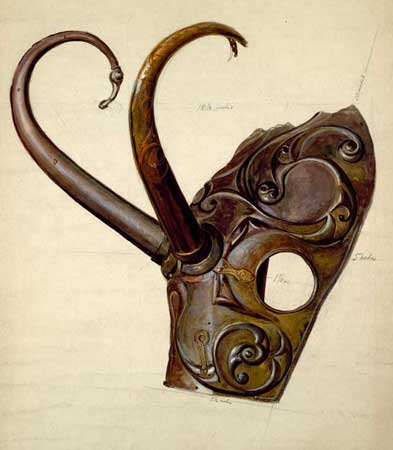
This watercolour of a bronze pony cap was produced by Thomas Brown to illustrate an article by John Alexander Smith in the Proceedings of the Society of Antiquaries Scotland in 1867. In the article Smith suggests that the object may have been used to cover a human face as a mummer’s mask, and much attention was drawn to the unusual horns. The object is now thought to be a cap for a pony, and in fact the horns are unlikely to belong to the mask; instead they are assumed to be drinking horns that have been attached at a later date. The cap can still be seen in the Museum, in Level -1 of the Scotland galleries.
The archive also gives us fascinating insights into how the Museum collections have been used over the years. The Natural Sciences specimens have been consulted by many eminent scientists over the years, amongst them a gentleman named John James Audubon. Now best known for his ornithological masterpiece, The Birds of America, Audubon made a name for himself at the Museum for quite a different reason. Audubon borrowed bird specimens and apparently took such poor care of them that the loaning of specimens was promptly banned. The following entry can be found in the records of the Natural History Department:
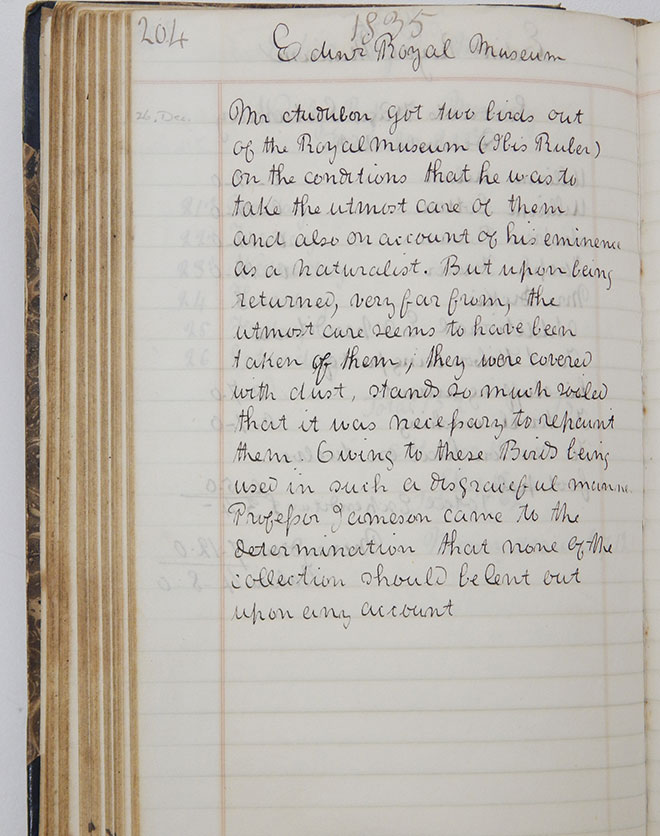
The entry reads:
‘Mr Audubon got two birds out of the Royal Museum (Ibis Ruber) on the conditions that he was to take the utmost care of them and also on account of his eminence as a naturalist. But upon being returned, very far from, the utmost care seems to have been taken of them; they were covered with dust, stands so much soiled that it was necessary to repaint them. Owing to these birds being used in such a disgraceful manner Professor Jameson came to the determination that none of the collection should be lent out upon any account.’
The Museum archive not only cares for the records of National Museums Scotland, but also houses the archives of people connected to the Museum and its collections. One of the larger collections that we hold is the records of John Harvie-Brown, an Edinburgh-born naturalist who made numerous expeditions to Scotland and Northern Europe to study natural history. Harvie-Brown wrote diaries on his travels which include comical sketches, such as the one below, which is included in his account of a trip to the Pechora River in North-West Russia in 1872. Here Harvie-Brown depicts himself as a rotund figure as he ‘starts for the Perchora’ and a much smaller and scrawnier man ‘returned’. This is a typical example of Harvie-Brown making fun of himself as he recounts his experiences.
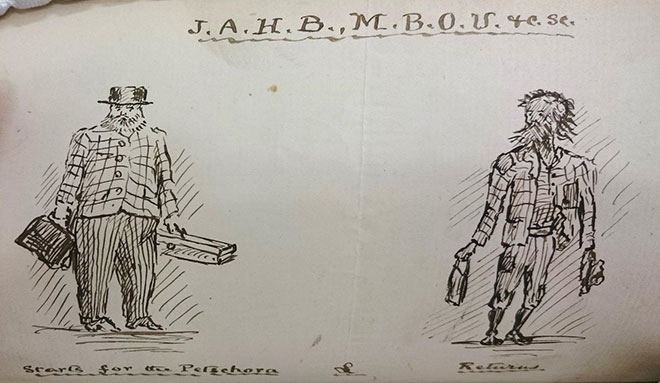
The Museum Archive also holds an archive collection from Jenners, a department store which has been located on Princes Street in Edinburgh since 1838. The collection includes advertisements, fashion plates and catalogues which show the changing fashions over time. The catalogue shown below depicts luxury clothing that was available from Jenners Department Store in 1935.
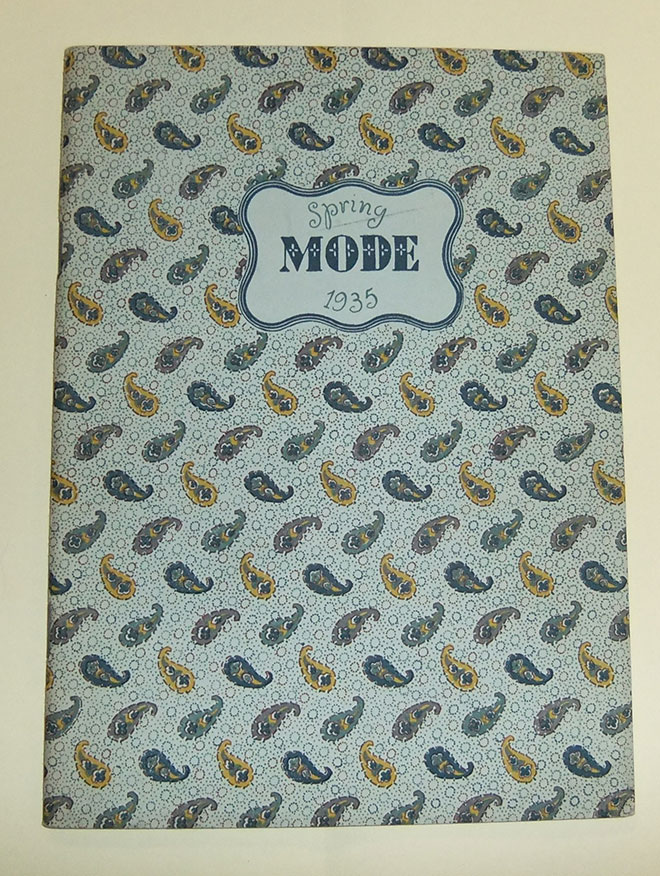
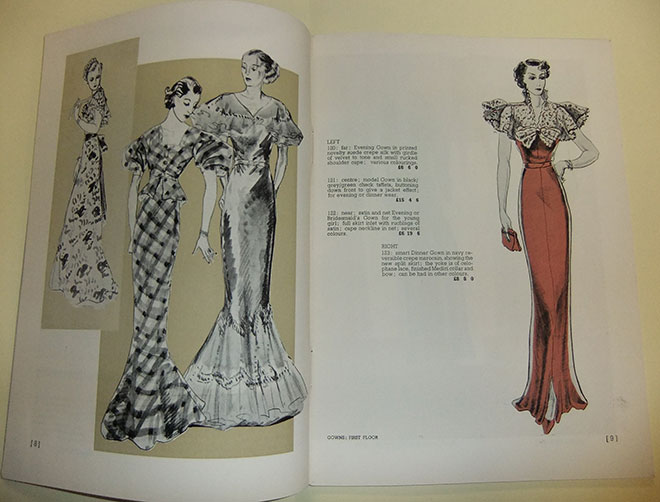
However, just a few years later, World War II was showing its effect on fashion, and even the production of Jenners’ catalogues. The note attached to this catalogue reads ‘The Government’s restrictions of paper allows us to send out only one-third of the usual number of booklets. We shall be very grateful if you will return this booklet to us when you have finished with it so that it may be sent to someone else.’

As you can see there is a wide variety of material held in the archive which gives us unique insights into the history of our Museum and its surroundings. If you would like to find out more, you can search our online catalogue or email us, library@nms.ac.uk.
